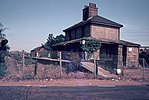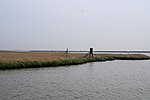Belton with Browston

Belton with Browston is a civil parish in the English county of Norfolk. Historically part of Suffolk, the parish consists of the villages of Belton and Browston Green, and is situated some 5 miles (8 km) south-west of the town of Great Yarmouth and 61⁄4 miles (10 km) north-west of the Suffolk town of Lowestoft.[1]The civil parish has an area of 3.23 square miles (8.36 square km) and in the 2001 census had a population of 4,098 in 1,589 households, the population reducing to 3,805 at the 2011 Census. For the purposes of local government, the parish today falls within the district of Great Yarmouth. However prior to the Local Government Act 1972, the parish was within Lothingland Rural District in Suffolk[2][3]. It is connected to Yarmouth by bus services 6B and 7 and to Norwich by the X11 service, operated by First Norfolk & Suffolk.
Excerpt from the Wikipedia article Belton with Browston (License: CC BY-SA 3.0, Authors, Images).Belton with Browston
Amhurst Gardens,
Geographical coordinates (GPS) Address Nearby Places Show on map
Geographical coordinates (GPS)
| Latitude | Longitude |
|---|---|
| N 52.5674 ° | E 1.66014 ° |
Address
Amhurst Gardens
Amhurst Gardens
NR31 9PJ , Belton with Browston
England, United Kingdom
Open on Google Maps











